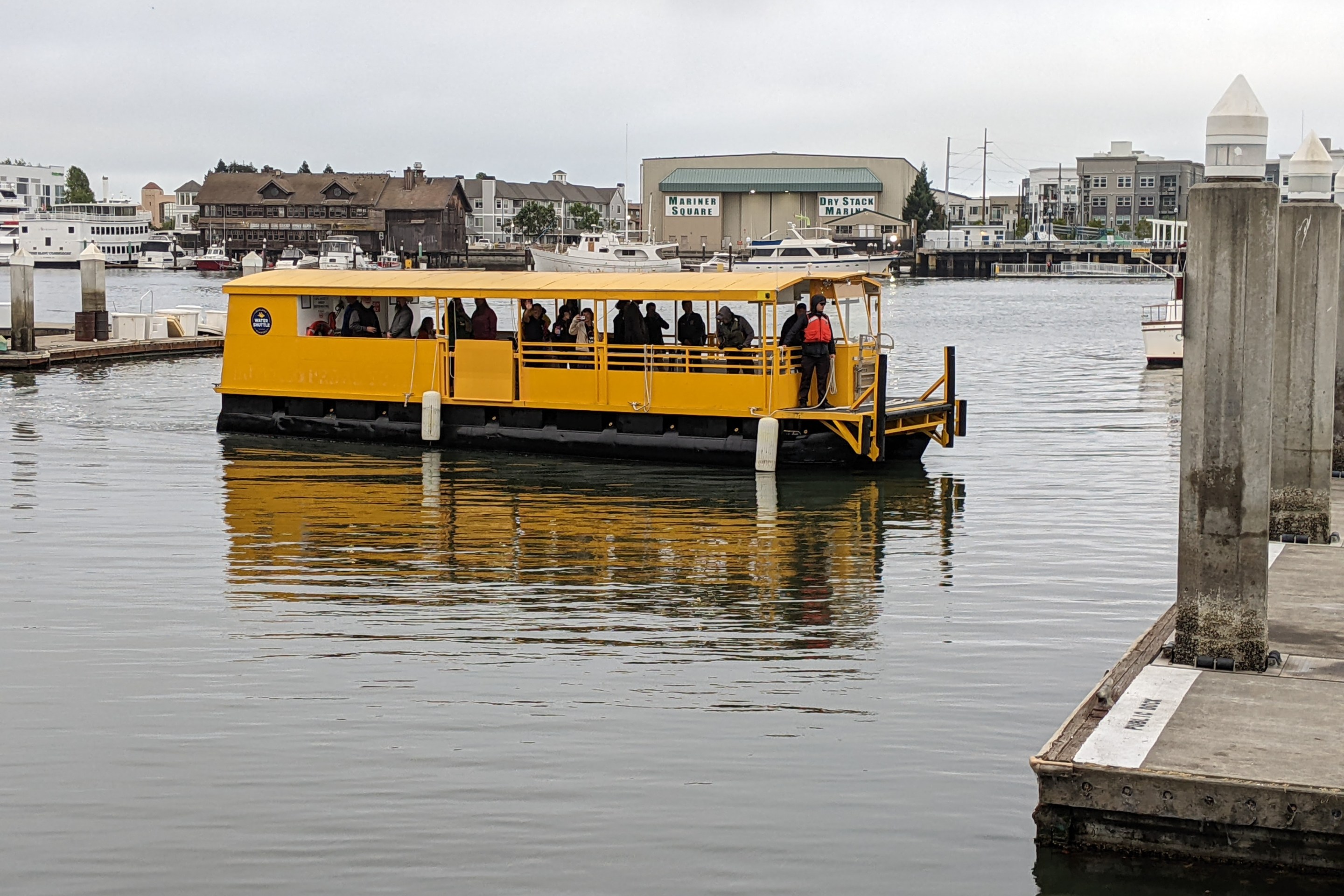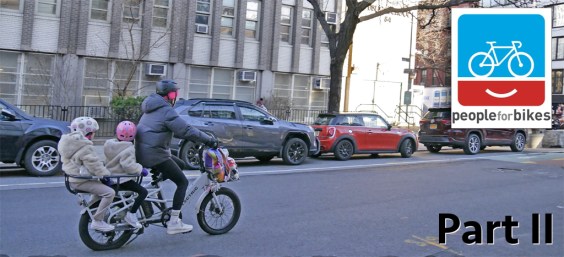For those who say driving rates will pick right back up again when the economy's really humming, here’s something to chew on: In a report released this morning, “Moving Off the Road,” U.S. PIRG presents further evidence that unemployment rates and driving rates have changed independently of each other.
Transportation reformers have made the case that there are multiple reasons behind the dip in driving rates, and that many of these factors will continue to have an impact long after this economic slump is over. If the change is in fact a lasting one, it signals that conventional forecasts of escalating traffic are wrong, strengthening the case for overhauling car-centric transportation policies in favor of transit, biking, walking, and more efficient land use.
Today's report from U.S. PIRG builds on their previous, groundbreaking research showing that young people are leading the reduction in driving rates and that the Driving Boom has decisively ended. These findings have become common knowledge, frequently referenced by top federal officials, members of Congress, and even international credit rating agencies.
The Drop in VMT Isn't About Unemployment
The PIRG report compares changes in driving and joblessness in all 50 states from 2005 to 2011. The authors call it "a useful natural experiment to examine different factors behind America’s reduction in driving," and it provides ample evidence that unemployment doesn't explain the drop in VMT. If the Americans were driving less because jobs are scarcer, for instance, it would stand to reason that the states hardest hit by unemployment would be those with the biggest drops in VMT. But that’s simply not true.
For example, the top state for unemployment growth was Nevada, whose jobless rate tripled between 2005 and 2011. And Nevada is one of just four states that's actually driving more now than during the peak years of 2004-2005. (Two of those four states are in the Gulf South -- Alabama and Louisiana -- where the devastating Hurricane Katrina obviously affected travel during the driving peak year of 2005.)
And the number one state for VMT drop? Alaska, which has reduced its mileage by a whopping 16.23 percent since 2005. So Alaska must be suffering with staggering unemployment, right? Not so. Every state in the union experienced some growth in unemployment, but in Alaska it was just a 10 percent increase -- from 6.9 to 7.6 percent.
One state is an outlier on both fronts: North Dakota, which has seen a massive surge in energy development. VMT hasn't just risen in North Dakota since 2005, when it started dropping everywhere else -- it’s soared. VMT there has grown by 12.29 percent -- nearly four times the growth rate of the next-place state. Even North Dakota’s jobless rate has risen -- but only by 3 percent. It still has the lowest unemployment rate in the nation.
Report author Phineas Baxandall of U.S. PIRG even turned the employment numbers around to see if they matched the dip in driving better if you counted "declines in the employed share of their working-age population," a slightly different way to measure joblessness. But no dice: Among the 23 states in which driving miles per person declined faster than the national average, only 11 saw faster-than-average declines in the employed share of their working-age population. And among the 10 states with the greatest reductions in the employed share of population, only two were also among the 10 states with the largest reductions of driving.
The hypothesis that the dip in driving rates is linked to rising joblessness makes logical sense, and there’s undoubtedly some truth there. “After all,” as Baxandall writes, "states with sharper increases in unemployment will have a steeper reduction of commuters and residents with greater fear of job loss will be less likely to drive to the shopping mall or the movies."
But the economic slump and joblessness simply can't explain the large and enduring drop in driving rates. Baxandall has explored some other possible factors in previous reports: the way that technology has replaced the need for some trips; the growing preference for walking, biking and transit instead of driving, especially among young people; the rising price of gas.
So Then It Must Be About Urbanization or Telework, Right?
In "Moving Off the Road," he also debunks some theories that might otherwise seem to hold water. For example, Millennials have been moving back to cities -- places where distances are shorter and more destinations can be easily reached by foot, bike, or transit. It would stand to reason that more people living in cities would mean fewer miles driven, right? But while the most urbanized states do have the lowest driving rates, the states that saw the greatest growth in urbanization between 2005 and 2011 weren’t at all the same ones that saw the greatest drop in VMT. “On the contrary,” Baxandall writes, “the four states in which the rural share of population increased during this period also reduced per-capita driving.”
Still, the mysterious lack of correlation between urbanization and driving might be explained by the fact that "the more important population shifts are not between rural and non-rural areas but between suburbs and more densely populated cities." Continued migration from suburbs into cities could well continue to reduce driving rates.
Another logical factor in the driving decline is the rise of telework. More and more jobs can be done remotely, and 9.5 percent of all workers say they work from home at least one day a week. But Baxandall says those people may not have to drive to work, but they're finding ways to fill in those miles.
"Home-based arrangements -- and particularly telework -- may encourage people to live in more rural settings further away from their place of employment, which could increase how much they drive," Baxandall writes. "The most recent National Household Travel Survey indicates that 9 percent of city commuters telecommute even once per month, compared to 14 percent of suburban commuters and 10 percent of rural and town commuters."
But a majority of miles driven are for non-commuting purposes. And it's the non-work driving that has seen the sharpest reduction. People have reduced their travel for family and personal errands twice as much as they've reduced their work travel. They're driving less for social and recreational reasons, too. The reduction in driving to and from work was actually less than 16 percent of the total reduction in miles driven.
Less Road-Building For Less Driving
Still, the drop in driving has been dramatic. Nationally, per-capita VMT peaked in 2004 and had fallen 7.4 percent by the end of 2012. And the trend is particularly pronounced among the young, the famous Millennial generation that's got everyone scratching their heads. Average driving miles for Americans aged 16 to 34 fell by 23 percent between 2001 and 2009.
Another reason we can be sure that these trends aren't mainly a product of the recession is that they began before the recession. Per-capita driving peaked in 2004 -- three years before the start of the recession. The number of vehicles per person also peaked before the recession. And they haven't bounced back since the recession technically ended in June 2009. And Gross Domestic Product and driving rates, which have tracked closely together for decades, have "uncoupled," as you can see in the image above.
There are a combination of reasons for the decline in driving, and it's still unclear just how much weight each one has. U.S. PIRG has done an excellent job showing that the changes in travel behavior can't simply be chalked up to any one factor, even something as seismic as the Great Recession. One way or another, Baxandall says, "policy makers can stop wondering whether American driving trends are changing" -- and they should start changing transportation policy in accordance with people's changing behavior.
"Correctly identifying a long-term plateau or reduction in driving would provide enormous opportunities to avoid waste and invest in the future," he writes.








